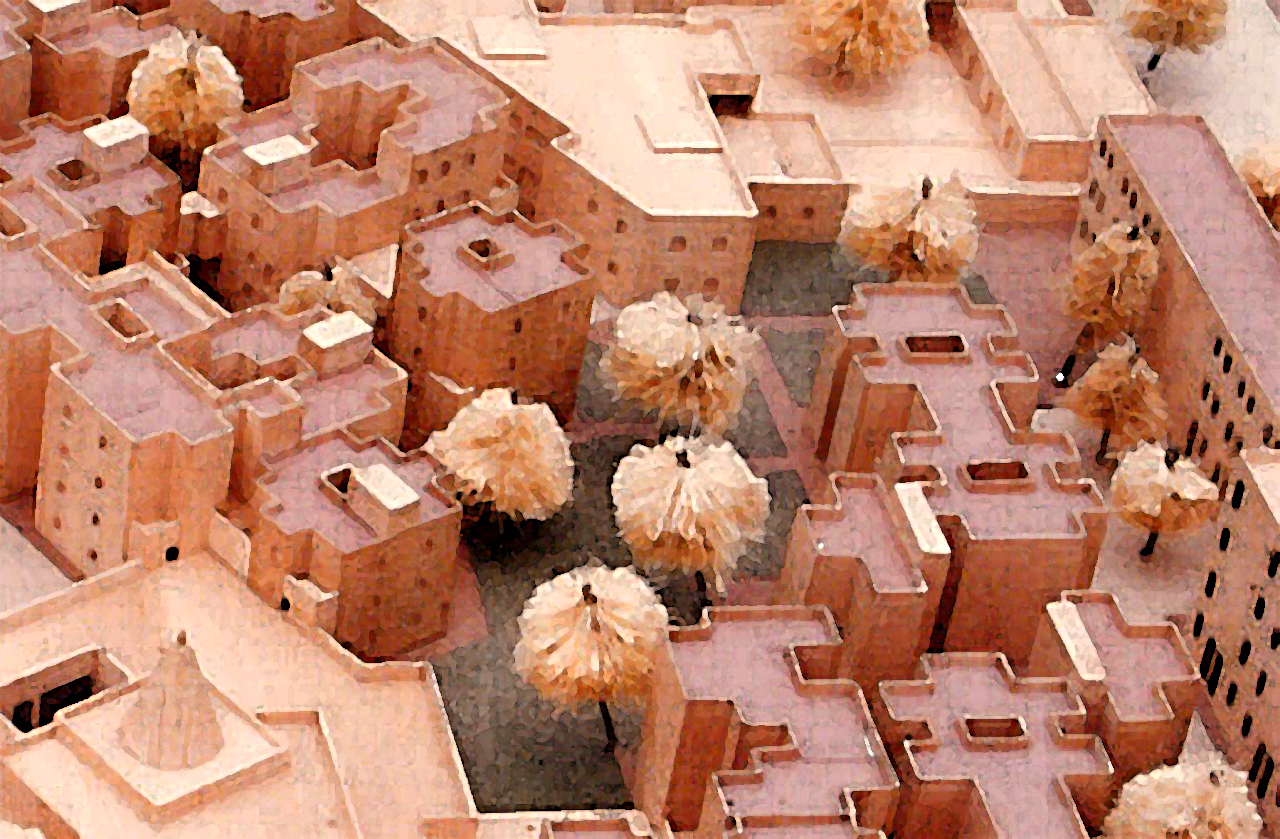Rehabilitation of Evacuee Community, Delhi
Ward VIII (Shahjahanabad) in the M.S. Road Area
B-Arch Thesis | T.V.B. School of Habitat Studies, India (1996)
Through taking up this project for my undergraduate design thesis, I attempted to critically review the redevelopment strategies adopted by the planning authorities for the historic walled city of Delhi and its environs. This effort was undertaken as part of examining the options available for rehabilitating the residents of the walled city, in order to improve their living environment without disrupting their lifestyle in any other way. Here the basic aim was to develop an appropriate approach which would look beyond the physical issues concerning the inner city rehabilitation and specifically address the problem of resettlement of the walled city residents, as a part of a holistic redevelopment and renewal strategy.
Apart from trying to explore the planning and design aspects related to the study, an attempt was made to redefine the housing paradigm for the urban poor, such that it is centered on involving a participatory approach. As part of this approach, the thesis tried to explore the potential role of an architect as a professional amongst a variety of actors playing their roles, either independently or in conjunction with each other.
The case study undertaken formed a part of the M.S. Road area redevelopment study, where approximately 10 acres of land was being handed over to the “slum wing” of the Delhi Development Authority (DDA) for providing permanent accommodation to the evacuee families from Chowk 4&5 and Turkman Gate area, located in the walled city. These families were residing in temporary (transient) housing (accommodation) located in the M.S. Road area, just outside the walled city of Shahajahanabad. Though the above case was treated by the DDA as a one off situation involving relocation of families as a part of redeveloping the area (through demolition and rebuilding), a case was being made to develop such a methodology at an broader level for dealing with the redevelopment of the properties which have been declared “dangerous or unfit for human habitation” within the walled city.
There were a number of issues of varying degree of complexity that this thesis attempted to address along with proposing a design solution.
- Review of existing policies and practices adopted by the planning authorities for providing shelter to the urban poor particularly in the context of inner city.
- Critical evaluation of the redevelopment scheme for the area in question in terms of its land use distribution, density and its response to its surrounding context consisting of highly developed areas with a strong historical significance for both the old and the new city.
- Formulating a strategy and a programming design brief through involving the resident community in both the planning and implementation phase of the proposal.
- Examining design related issues of optimum density, amount of built up area per unit, typology of units, provision for incremental growth etc., along with proposals regarding the allotment and occupancy of the units.
Thus the thesis tried to challenge the traditional approach that had been adopted by planning authorities and regulatory agencies in Delhi. Based on research into and documentation of past experiences, it was determined that these approaches have created more problems rather than solve the issues at hand. The thesis proposed a more humane and people-based participatory approach to improving the habitat conditions for the evacuee community. It explored ways and means of providing for the rehabilitation of the evacuees of the inner city by formulating a design brief and program that not only caters to the needs of the target group but also addresses the site for the new housing within its historic, physical and social context.

Site Location and Linkages, Sub Zone-D2

Site Context

Site from North-East Edge

Site from South-West Edge

Master Plan - Built/Open Space

Organisation of Unit Clusters

Unit Cluster Surrounded by Shared Open Space
